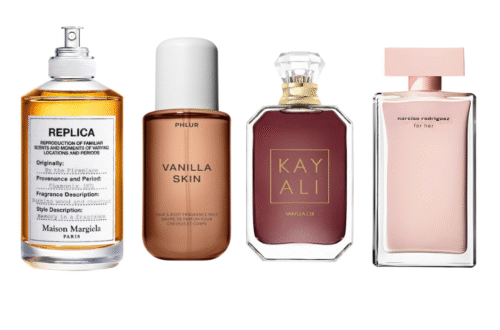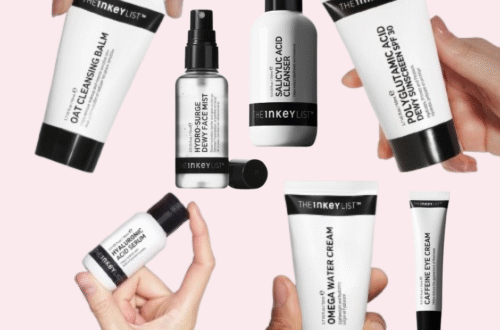Choosing the right skincare Product can feel wildly overwhelming. With aisles upon aisles of products shouting about acids, peptides, retinoids, and ceramides, it’s no wonder so many of us end up tossing random serums in our cart and crossing our fingers. But if you want to see results (and avoid irritating your skin into a frenzy), understanding which active ingredients suit your skin type is a game-changer.
If you’re new to this whole skincare rabbit hole, let’s clear this up right now: active ingredients are the components in your skincare that do the work; they’re the ones responsible for treating concerns like acne, dryness, hyperpigmentation, aging, etc. Think of them as the “power players” in your lineup.
They’re different from the “base” ingredients (like water or emollients), which are more about texture, preservation, or delivery. Actives go to work on your skin. But not all actives are created equal, and definitely not all actives are meant for your skin.
Step One: Know Your Skin Type Like the Back of Your Hand
Before we get into ingredients, you need to know your skin type. This is the foundation like picking shoes before you know your shoe size. Here’s a quick refresher:
- Oily: Shiny all over, especially T-zone; prone to clogged pores and breakouts.
- Dry: Tight-feeling, flaky, may look dull.
- Combination: Oily in some areas (usually T-zone), dry in others.
- Sensitive: Easily reacts to products; redness, stinging, or bumps are common.
- Normal: Balanced, not too oily or dry (and if that’s you congrats, you unicorn).
Now that you’ve identified your skin type (and please, don’t guess pay attention to how your skin acts without product for a day or two), let’s talk ingredients.
The Best Active Ingredients for Each Skin Type
For Oily or Acne-Prone Skin
Your skin is producing more oil than it knows what to do with, and sometimes that oil traps dead skin cells, causing breakouts. You want ingredients that exfoliate, unclog, and regulate oil without being too harsh.
Top Actives:
- Salicylic Acid (BHA): Oil-soluble, so it gets deep into pores and clears out gunk. A must-have for blackheads and whiteheads.
- Niacinamide: A dream ingredient balances oil production, calms inflammation, and helps reduce the appearance of pores.
- Retinoids (Retinol, Adapalene): Speeds up cell turnover, prevents breakouts, and improves texture. Just ease into it every other night at first.
- Benzoyl Peroxide: Great for active breakouts. It kills acne-causing bacteria but can be drying, so don’t go overboard.
What to Avoid: Heavy oils, comedogenic ingredients, over-exfoliating (I’ve made that mistake… hello, angry red skin).
For Dry or Dehydrated Skin
Dry skin is craving moisture and ingredients that help hold onto it. It may flake, feel tight, or look a bit dull. You want ingredients that are nourishing, hydrating, and barrier-repairing.
Top Actives:
- Hyaluronic Acid: A hydration superstar it draws moisture into the skin like a sponge. Just make sure to seal it with a good moisturizer.
- Ceramides: These help rebuild your skin’s barrier and lock in moisture. Think of them like bricks in your skin wall.
- Lactic Acid: An exfoliating acid that’s gentle but hydrating. Unlike harsher AHAs, it won’t strip you dry.
- Squalane: A non-greasy oil that hydrates and soothes. Great if your skin needs extra love.
What to Avoid: Strong retinoids or BHAs right out the gate. They can worsen dryness unless buffered properly.
For Combination Skin
Tricky, I know. You’re dealing with oily and dry patches, which means you need a balanced approach. Multitasking ingredients are your best friend.
Top Actives:
- Niacinamide: Again, a star. Helps both oily and dry areas without overcorrecting.
- PHA (Polyhydroxy Acids): A gentle exfoliant that hydrates while smoothing texture.
- Azelaic Acid: Evens out skin tone, calms redness, fights breakouts, and is gentle enough for dry spots.
- Beta-glucan: Super calming and hydrating. Good if your skin flips out easily.
What to Avoid: Harsh astringents or trying to treat your whole face the same way. Sometimes spot-treating is smarter (I literally use two different moisturizers on different parts of my face).
For Sensitive Skin
If your skin stings at the mere sight of a new product, welcome to the club. With sensitive skin, the rule is less is more and patch testing is non-negotiable.
Top Actives:
- Centella Asiatica (Cica): Calms irritation and helps repair the skin barrier. It’s like a hug for your face.
- Allantoin: Soothes and protects. Found in many gentle formulations.
- Panthenol (Vitamin B5): Hydrates and reduces inflammation.
- Low-dose Azelaic Acid: Surprisingly well-tolerated and helpful for redness or rosacea-prone skin.
What to Avoid: High concentrations of AHAs, strong retinoids, synthetic fragrances, and anything labeled “tingling” (that’s not a feature it’s a warning).
For Normal Skin
You lucky human, you! You can dabble a bit more freely but still benefit from a consistent, intentional routine.
Top Actives:
- Vitamin C (Ascorbic Acid): Brightens, boosts collagen, and defends against free radicals.
- Peptides: Help with skin firmness and elasticity.
- Retinol (in moderation): Preventative and reparative start low and slow.
- AHAs (like Glycolic Acid): For occasional brightening and smoothing.
What to Avoid: Don’t overdo it just because you can. Balance is still key.
Pro Tips for Mixing Actives (Without Turning Your Face Into a Science Experiment)
- Avoid doubling up on exfoliants. Using AHA + BHA + retinol all in one night is a recipe for disaster (been there).
- Introduce new actives one at a time. That way you know what’s working and what’s not.
- SPF is non-negotiable. Many actives make your skin more sensitive to the sun. Protect your progress!
- Always patch test. Especially if you’re trying something strong or totally new.
My Personal Combo (Because You Asked, Right?)
I’ve got combination skin with a tendency toward dehydration and occasional hormonal breakouts. My go-to routine right now looks like this:
- AM: Cleanser → Vitamin C → Niacinamide → Moisturizer → Sunscreen
- PM: Cleanser → Azelaic Acid or Low-Dose Retinol (alternating nights) → Ceramide-rich Moisturizer
And honestly? My skin has never been happier. It took a little trial and error (okay, a lot), but once I stopped chasing trends and started focusing on what my skin actually needs, everything changed.
Final Thoughts
Choosing the right active ingredients isn’t about buying the most expensive serum or following that 12-step K-beauty routine you saw on TikTok. It’s about listening to your skin and giving it the right tools to thrive. And hey don’t be afraid to switch things up as your skin changes with the seasons, your hormones, or your lifestyle.
Trust the process. Be gentle. And remember, glowing skin doesn’t come from doing the most it comes from doing what’s right for you.





